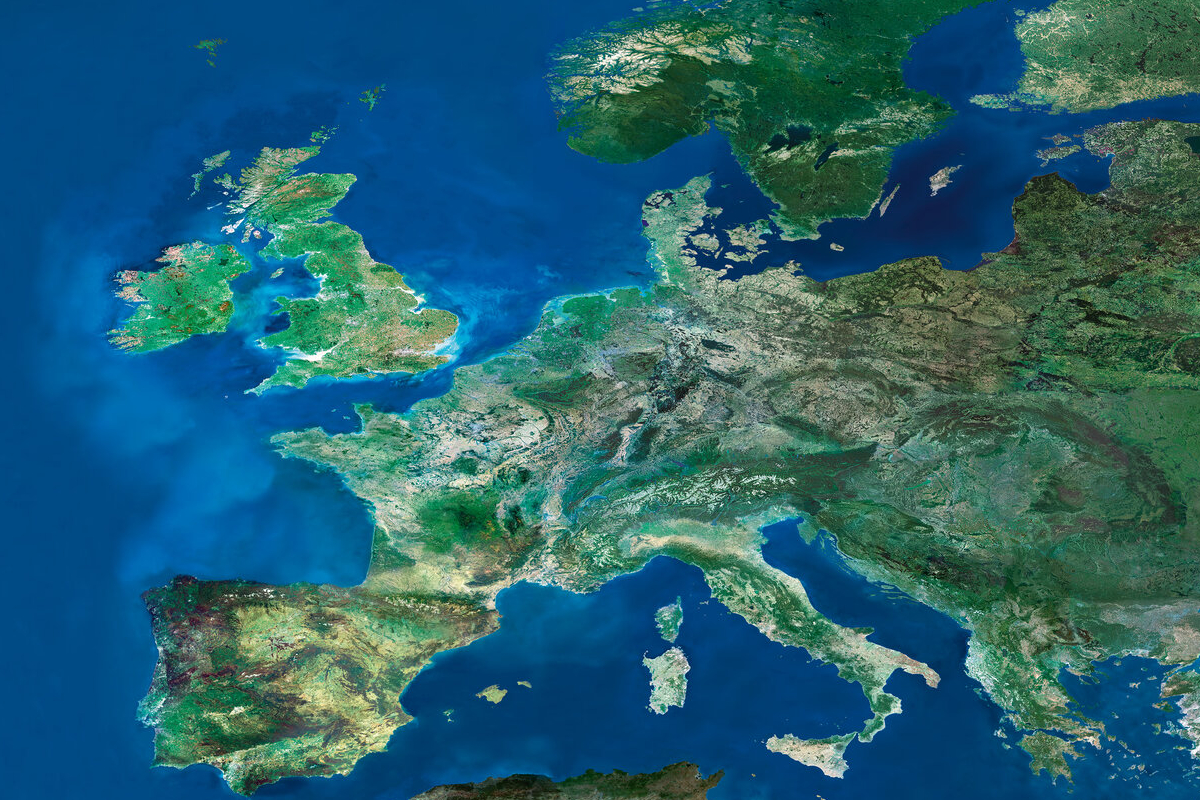Externalisation of migration control: from the 1990s to the present
Topic
Country/Region
13 June 2023
A talk given by Statewatch researcher Yasha Maccanico at the TransBorder Camp in Nantes, July 2022.
Support our work: become a Friend of Statewatch from as little as £1/€1 per month.

Raison d’etat
To understand the dynamics that have led to a growing externalisation of EU migration policy, certified by the 2015 Agenda on Migration and with plans to intensify it in the 2020 Pact on Migration and Asylum for which political discussion on its operationalisation is underway, one must consider the peculiarity of the justice and home affairs (JHA) policy field, especially at the EU level.
JHA policy is the realm of raison d’etat, whereby public authorities may be allowed to act and adopt measures and rules in ways that stray from what rules and laws would normally allow due to contingencies linked to security and the maintenance of public order. Initially, member states (MSs) represented in the Council of the EU dominated this policy field (in the former ‘Third Pillar’ of EU law) because security and borders were deemed a national concern and competence. This meant that such policies were largely steered by a combination of interior ministers and police chiefs at the intergovernmental level within the Council.
Integrating justice and home affairs into EU decision-making
This structure lasted until 2010 and the entry into force of the Lisbon Treaty, which partly brought it within EU jurisdiction, with the European Court of Justice (ECJ) empowered to intervene on JHA matters. The most important development was much earlier, when the previously separate asylum and immigration policy fields were first conflated, and then incorporated into JHA policy by the Amsterdam Treaty and the Tampere Council conclusions that set up the initial phase of the creation of the Area of Freedom, Security and Justice (AFSJ).
The early phases of migration policy externalisation were largely bilateral, for example between Spain and Morocco and Italy and Libya. Migration was already treated in alarmist terms prior to 2000, but with the antiterrorist emergency at the turn of the millennium EU documents started referring to the rather oxymoronic-sounding external projection of JHA (i.e. internal affairs) policy and of a need to reap the dividends of external action. However, the external projection of a policy field that was causing significant problems (from the perspectives of rights and the rule of law) internally cannot be considered innocent.
The successor of the Tampere Conclusions, the 2005 Hague Programme for the second phase of development of the AFSJ, was a security-minded nightmare. It further strengthened the link between migration and security policies and migrants passed from being victims of smugglers and traffickers to potential risks from an antiterrorist perspective. The creation of Frontex by the 2004 Regulation and its operation from Warsaw headquarters as of 2005 meant that there was an actor solely concerned with presenting migration as an unsolvable problem without massive investment in technologies and deployments at borders to prevent irregular entry, also to strengthen its own role. It was able to influence three levels: national, supranational (EU) and intergovernmental (MS acting through the Council). Moreover, MSs’ reluctance to allow it to interfere with their internal JHA policies and practice meant that it developed its relations with third countries and coordinated joint actions beyond the EU’s external borders, for instance in maritime deployments. A lack of operational powers also led Frontex to play an ideological role through its analytical work (risk analyses, etc.) and advice to governments and EU institutions; it has consistently worked ever since to normalise discrimination and human rights violations against people on the move in the name of correct migration policy enforcement.
Effects abroad
In third countries, the effects of this externalisation were troubling. In Libya this included police raids targeting foreigners, detention centres in which conditions were dreadful (also when Ghaddafi held power in Libya, but the situation has worsened since he was toppled and killed) and deportations enacted by dumping people in the desert near border areas. Similar dynamics occurred in Morocco, added to by the periodic criminalisation of migrants regardless of their status (raids would take place in neighbourhoods where migrant workers lived, UNHCR certificates would be ripped in front of their holders’ eyes) in proximity of summits or high level meetings with EU and/or MS authorities.
The EU would pressure countries to adopt strict laws to criminalise so-called “irregular migration”, as happened in Morocco and Libya, regardless of whether third countries considered this a priority. It is also worth noting that initiatives to block refugees fleeing the Middle East in Turkey using the first safe country principle date back to the end of the last century (proposals by the UK presidency of the Council under Blair in 1999 and a plan by the Austrian presidency in 1998). In 2016, the shameful EU/Turkey deal to turn refugees from the Syrian and other conflicts into illegal entrants awaiting transfer to Turkey (treated as a safe country despite repression against its citizens and military involvement in Syrian and Kurdish territories) allowed this plan to materialise, with effects that persist to this day.
A problem that can be appreciated throughout documentation to develop the external dimension of EU JHA policy has been the treatment of so-called third countries as mere instruments to advance a toughening of the EU migration regime, even against their own interests or those of their citizens. Initiatives to prevent people from moving closer to EU borders even undermined the development of areas of free movement that mirrored what was happening in Europe, like the ECOWAS area of free movement between west African states.
2015 Agenda on Migration
I will now jump forward due to time limits, to harmful structural developments under the EU’s 2015 Agenda on Migration, under which the rights of people on the move without authorisation were structurally subordinated to state practices, particularly fingerprinting and registration in the Eurodac database, and the 2020 Pact on Asylum and Migration which seeks to build on developments under the Agenda without acknowledging its faults, intensifying a drive to externalise asylum and border controls while increasing deportations (“returns”).
There has been a conceptual shift since 2018, because it appears that authoritarian regimes started to be considered useful, from a migration policy perspective, because of their strict control over their populations and societies. Hence, initiatives to strengthen interior ministry departments tasked with tackling irregular migration and coast guard bodies regardless of other considerations, alongside the provision of training, equipment and funding, run the risk of empowering regimes and governments to enact discriminatory policies and practices, enabling possible authoritarian drifts in the process. In contexts in which serious human rights violations are notorious and/or documented, cooperation to strengthen interior ministries’ powers and capabilities may not be conducive to societal improvement, quite the contrary – the examples of Egypt and Libya come to mind.
This instrumental drive to use third countries for the EU’s own purposes, has featured work carried out to turn Niger into a deportation hub, plans are underway for Senegal to biometrically identify its whole population (in order to facilitate deportations) and Egypt has been given a role to train police forces in its neighbourhood despite ongoing repression. As an example of EU support to enhance interior ministry capabilities to manage borders and migration that does not assist development, one may point to the funding that Tunisia has obtained since 2018 (particularly from Italy) due to a resumption of sea crossings. An authoritarian drift is currently underway, and president Saied has suspended parliament, criminalised some MPs and drafted a new constitution to strengthen presidential powers, in the midst of social unrest. Sudan would be another example of EU cooperation assisting a problematic regime that is violently repressing civil society.
Libya has been a sore note ever since Ghaddafi was in power, with rights violations, deportations to border areas in the desert and awful conditions in detention centres, alongside deadly shipwrecks. It is being assigned important functions despite not having a government in control of its entire territory, institutions infiltrated by militias, an intermittent civil war, and the so-called coast guard’s personnel having members suspected of involvement in trafficking networks.
The 2016 EU-Turkey deal is outrageous, allowing asylum seekers to be degraded to the status of irregular entrants awaiting transfers back to Turkey, which has been designated as a “safe country” by decree. This strategy helps the Turkish regime to entrap its citizens who are on the receiving end of an expansive repression since the Gulenist coup attempt in 2016. Moreover, it seems counter-productive to pay billions of euros for Turkey to host refugees at the same time as its military operations and bombing beyond its borders in Syria steadily produces refugees.
To close, I will point to some possible lines of attack to challenge these dynamics and to some structural developments that have not had the attention paid to them that they deserve. The lines of attack I would suggest are, conceptually:
1) the fact that internal justifications for migration policy initiatives (states being able to choose who to let in and compatriot preference, for example) do not hold if they lead to promoting human rights abuses, police discretion and criminalisation abroad, and, in more concrete terms
2) that we are strengthening dictatorial regimes’ grip on their societies, fuelling and funding internal repression and criminalisation of dissidents. This is described in official documents as assisting development, using the phrase “enhancing third state capabilities to control borders and manage migration”, when it appears more like a redirection of development funds towards coercive state functions.
Tracking the Pact
At Statewatch, we monitor developments in our “Tracking the Pact” series and, alongside screening, Schengen Border Code reform and external processing of asylum claims, MOCADEM documents on readmission cooperation by third countries starkly reveal an effort to move from diplomacy towards collectively pressuring third states (threatening punishment for non-compliance) to accept returns. In particular, it is noteworthy that just before the Taliban takeover in Afghanistan, one of the priorities was to return people there, despite institutional knowledge that the situation on the ground was deteriorating. Similarly, documents on Ukraine from just before the Russian invasion in February 2022 focused on the difficulty of returning people to Crimea, Luhansk and Donetsk because Ukrainian state offices were not operative to issue travel documentation. These two examples provide a measure of how dogged efforts to deport people and compel third states to sign readmission agreements appear to disregard the situations people would be returned to.
Developments since 2015 have also shown how migration policy efforts have strayed further, from assisting MSs and the EU to enact a power grab towards becoming a wrecking ball in relation to international legal frameworks and human rights instruments that are increasingly deemed incompatible with strategic migration policy goals.
Questions
Two questions were asked. The first concerned developments before 1999.
The problem of efforts to introduce far-reaching changes include the EU visa list that was first approved in the mid-1990s detailing the citizens of what countries would need a valid visa not to be automatically considered “irregular” if found in EU territory. This list basically included most of the countries that ranked lowest in the previous UN Human Development Index. This clearly shows that its purpose was to entrench global inequality, which is one of the key drivers of migration. As such, people from around 100 countries were automatically transformed into “migration risks” (due to economic or security considerations), affecting entire populations from which only a selected few would be in a position to obtain visas.
Moreover, Council documents, whether they concerned checks on marriages, the situation of unaccompanied children, refugee status adjudication or returns, were all geared at states being able to use their collective power to overwhelm limits to their power to treat people as they pleased. Hence, work was done to establish that if one member state managed to find a way around limits that apply to their pursuit of strategic policy goals, all MSs should be able to “benefit” from it. The safe third country principle was pushed to enable MSs to swiftly declare asylum applications inadmissible (undermining the principle of individual assessment based on personal circumstances in the Geneva Convention on Refugees) and the Eurodac fingerprint database was conceived to implement a system to block asylum seekers in the country where they first entered EU territory.
The second question highlighted that there had been calls in Tunisian civil society for the president to take action against rampant corruption, also by MPs.
Of course, there are reasons that are unrelated to EU policy that account for developments in third countries including Tunisia (or Sudan, Egypt, Turkey, etc.), but it is hard not to consider that if the EU and MSs consistently direct funding and equipment at interior ministries to fight migration, this enhances their coercive capabilities and makes it more realistic for authoritarian pursuits to prosper. Since 2018, Italy ignored the social unrest and economic crisis that lay behind an increase in departures, to focus primarily on how border and migration management could be improved to prevent departures, funding such activities that may be interpreted as promoting racism and discrimination. The idea of “push factors” originally included conditions (social, economic, democratic standards, the health of civil society) in countries of origin that needed to be improved, but this progressively changed into blaming any departures on third countries not doing enough to fight migration.
Our work is only possible with your support.
Become a Friend of Statewatch from as little as £1/€1 per month.
Further reading

Pushbacks, migration policy and returns at the core of EU support for authoritarian regimes
The ongoing debate on pushbacks and rights violations at external EU borders neglects an important aspect: the EU and its states betray their claimed goal to promote human rights, the rule of law and civil society development worldwide by helping authoritarian regimes oppress their citizens, and also to stop them from leaving.
More externalisation of migration control by Blanca Garcés-Mascareñas
We pay but others do it. This first and foremost has been the response of the European Union to the so-called “refugee crisis”.
Implementing the Amsterdam Treaty: Cementing Fortress Europe
The five year deadline for agreement on the common EU immigration and asylum policy expired on 1 May 2004. This article examines the key decisions, how they were taken and what they will mean for asylum-seekers.
Spotted an error? If you've spotted a problem with this page, just click once to let us know.

